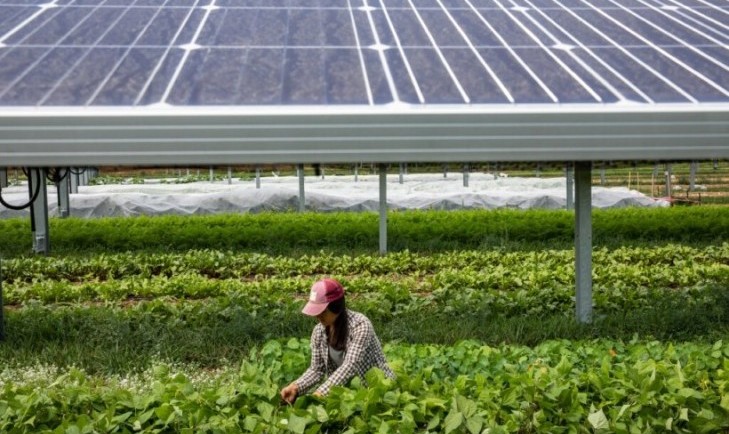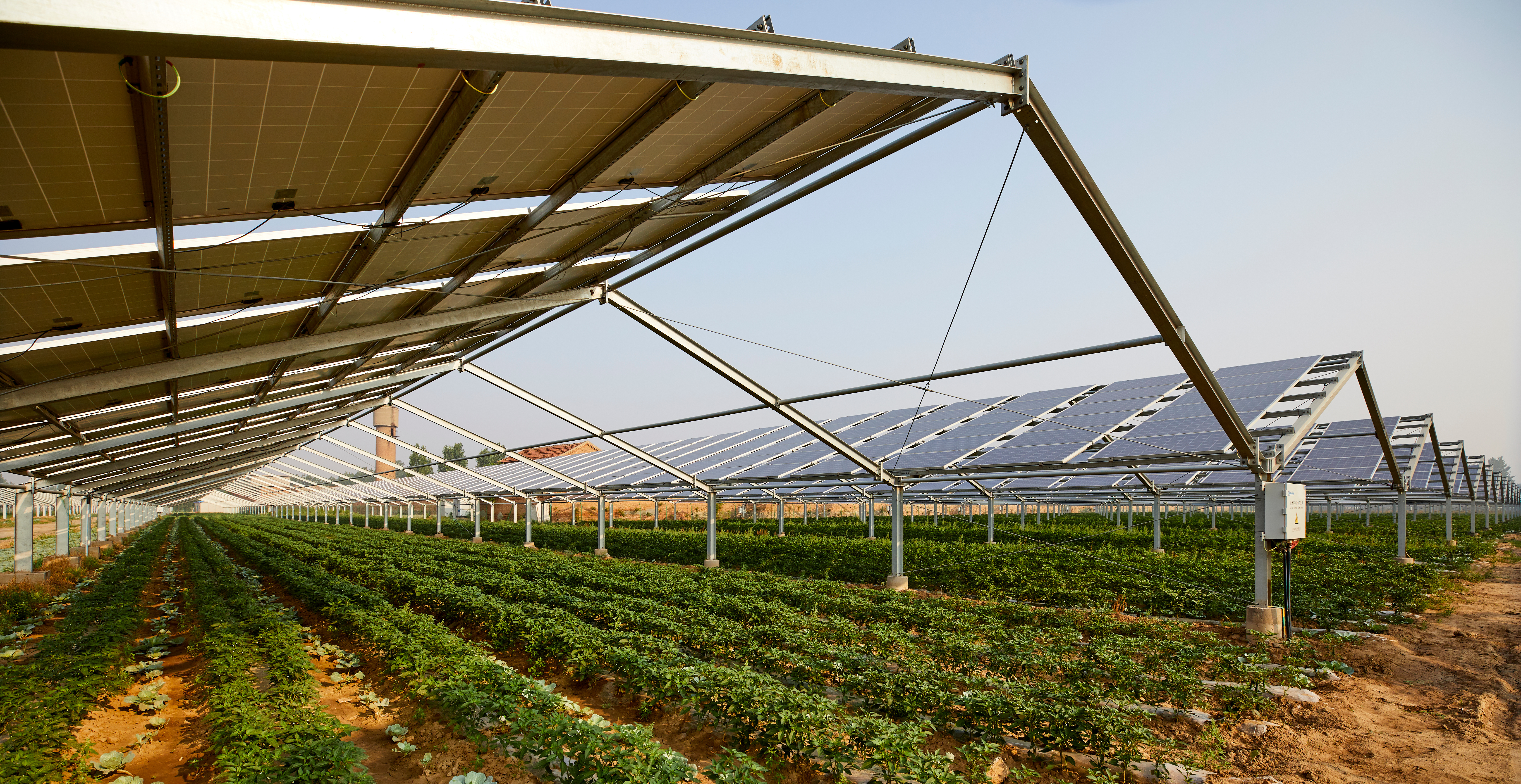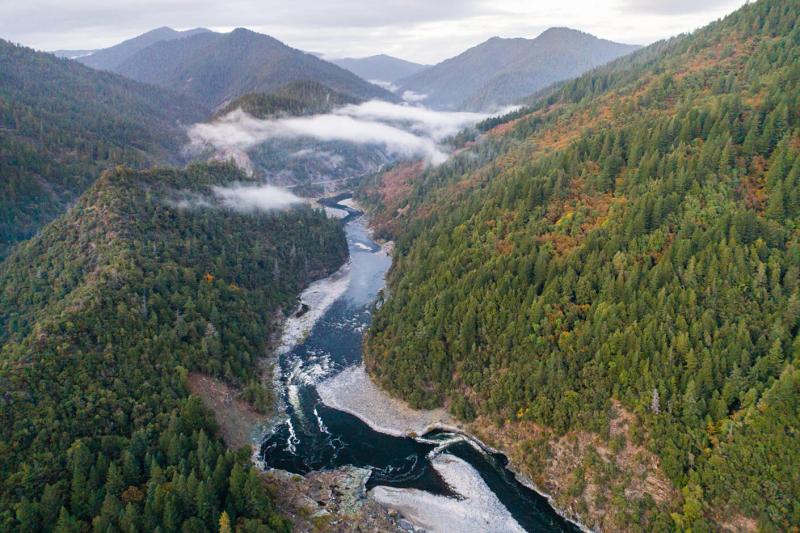10/10/24
Best of the West: Agrivoltaics bloom; salmon swim free; hurricane recovery; doubling power production; restoring waterways

The Western Governors' Association keeps you updated on the latest news in the West. Here are the top stories for the week starting October 7, 2024. (Photos courtesy of Adobe Stock Images, Jason Hartwick/Swiftwater Films, Werner Slocum/National Renewable Energy Laboratory)
When it comes to building out renewable energy systems to help meet the country’s energy demands, one problem that stands in the way is the sheer amount of land that it would take to build enough renewable energy infrastructure.
By some estimates, it will take millions of acres of land to support solar and wind generation in line with renewable energy goals.
In the face of these challenges, westerners are getting creative to strategically position renewable energy sources to best utilize the land that they occupy.
One such strategy that’s gaining traction in western states is known as agrivoltaics, which is the practice of co-locating solar generation with agricultural land. The technique positions solar arrays over productive cropland, which generates clean power, preserves farmland, and even helps crops grow more efficiently by providing shade during the heat of summer.
In Oregon, where summer heat waves in recent years have unexpectedly killed off crops, the Our Table Cooperative farm is installing agrivoltaic solar to not only generate power, but protect their crops as well.
The cooperative farm is installing panels 15 feet off the ground that will generate 112,500 kWh of clean power a year. Additionally, the panels will be mounted on a dual-axis motor that allows farmers to rotate the panels to optimize for either power generation or shade for their crops.
The farm’s directors hope that the panels will make their business more resilient by protecting their produce from summer heat waves and providing reliable clean power for the farm.
In Longmont, Colorado, part of Jack’s Solar Garden is covered by about 3,000 photovoltaic solar panels, which can collectively power about 300 homes. The farm has produced over 25,000 pounds of vegetables, herbs, and berries since 2021, while also supporting a large pollinator habitat.
Jack’s Solar Garden has also opened its doors to research on agrivoltaic farming, with the National Renewable Energy Laboratory, Colorado State University, and the University of Arizona studying the microclimates beneath its solar panels to understand how they affect plant growth.
The University of Arizona has extended its research on agrivoltaics through a partnership with the U.S. Department of Defense to create a research site to analyze how solar farming could benefit Arizona. In one study, the team found that soil moisture remained 15% higher on a plot under solar panels than on nearby plot without panels. In another study, black-eyed peas grown in full Arizona sun required twice as much water as compared to those growing under panels.
Another recent report from the Nature Conservancy in Nevada showed that developing agrivoltaics in the Diamond Valley could benefit an area grappling with water scarcity.
In Wyoming, an unlikely pairing between a global energy company and a Wyoming ranching family could produce one of the state’s first large-scale agrivoltaics projects.
The proposal from the energy company BrightNight would build more than 1 million solar panels, a battery storage facility, and above-ground transmission lines on private land owned by a ranching family that raises sheep. Previous research from Oregon State University found that land dotted with solar panels made for ideal grazing conditions for sheep, with animals grazing near solar panels gaining weight at their maximum rate in the OSU study.
The Wyoming project would install panels several feet off the ground, allowing sheep to graze the area uninterrupted.
Given the potential of agrivoltaics, federal entities like the Department of Agriculture and the Department of Energy have put millions of dollars behind efforts to research and build these systems in recent years.
Salmon swim free: salmon are swimming freely through the Klamath River for the first time in over a century, as the final of four dams on the river came down earlier this month.
The removal of the river’s four major dams will restore nearly 400 miles of habitat for salmon and other species that are essential to the river’s ecosystem.
that are essential to the river’s ecosystem.
“This is a monumental achievement – not just for the Klamath River but for our entire state, nation, and planet,” said California Governor Gavin Newsom. “By taking down these outdated dams, we are giving salmon and other species a chance to thrive once again, while also restoring an essential lifeline for tribal communities who have long depended on the health of the river. This is proof of what’s possible when we come together to prioritize our environment, our people, and future generations.”
Hurricane recovery: with Hurricanes Helene and Milton battering the Southeast in quick succession, Western Governors have been deploying emergency personnel and resources to assist in rescue and recovery efforts. These are just a few of the many ways that Western Governors are assisting states like North Carolina and Florida after back-to-back devastating storms.
Governors Jared Polis of Colorado and Laura Kelly of Kansas have sent multiple state task forces to the Southeast, as well as essential resources like Colorado’s Chinook helicopter and crew.
California Governor Gavin Newsom deployed 354 emergency responders to Florida on Wednesday to help with hurricane response, while Oklahoma Governor Kevin Stitt sent a helicopter rescue unit, water rescue teams, emergency personnel, and a public health team to Florida and North Carolina. Utah Governor Spencer Cox added Utah’s Task Force 1 to the recovery efforts in the region.
Doubling power production: Utah Governor Spencer Cox unveiled Operation Gigawatt this week, which is the Governors’ ambitious initiative to double Utah’s power production over the next decade.
The initiative prepares for increased energy demand thanks to Utah’s growing population, its energy-intensive industries like artificial intelligence, and the increased electrification of vehicles.
“Operation Gigawatt is critical to preserving our quality of life and ensuring strong economic growth,” Governor Cox said. “It puts Utah in a position to lead the country in energy development, secure our energy future and remain a net energy exporter while diversifying and expanding our energy resources.”
Operation Gigawatt hopes to secure Utah’s energy future through four key goals:
- Increasing transmission capacity so more power can be placed on the grid and moved to where it’s needed.
- Expanding and developing more energy production. This includes investing in what we currently have while developing new sustainable sources.
- Enhancing Utah’s policies to enable clean, reliable energy like nuclear and geothermal.
- Investing in Utah innovation and research that aligns with our energy policies.
Restoring waterways: the Interior Department is spending $90 million on projects to restore rivers and wetlands across the West.
The funding, which comes as part of the Infrastructure Investment and Jobs Act, will support projects such as a $20 million restoration of the lower Las Vegas Wash, which feeds 200 million gallons into Lake Mead every day.
Another $1 million will go to the Nambe Pueblo in New Mexico to remove dead trees and debris from the Rio Nambe and the Nambe Falls Reservoir, which were damaged by wildfire in 2022.